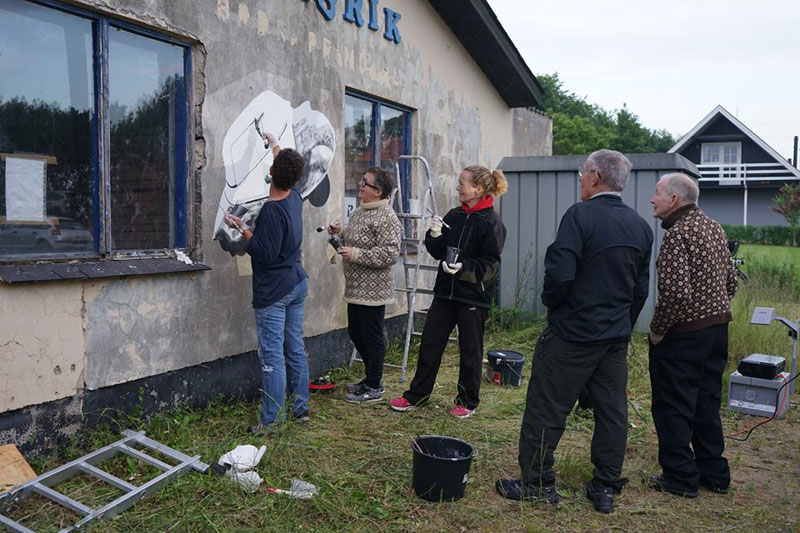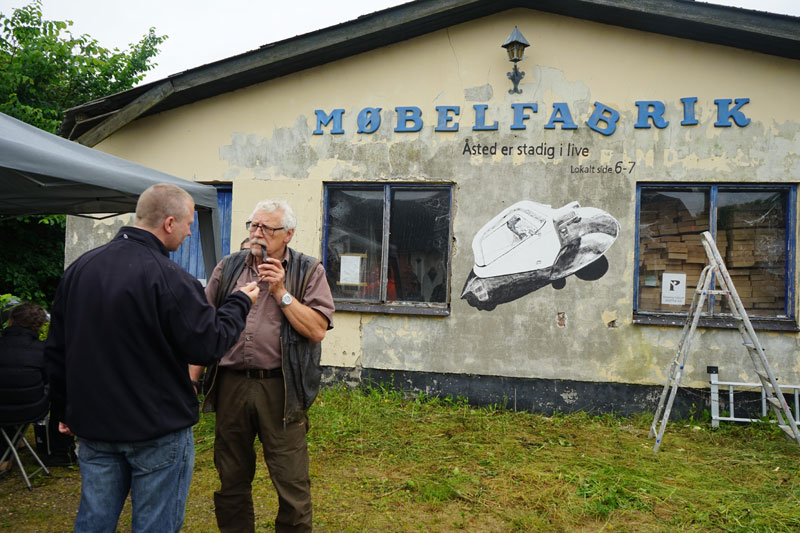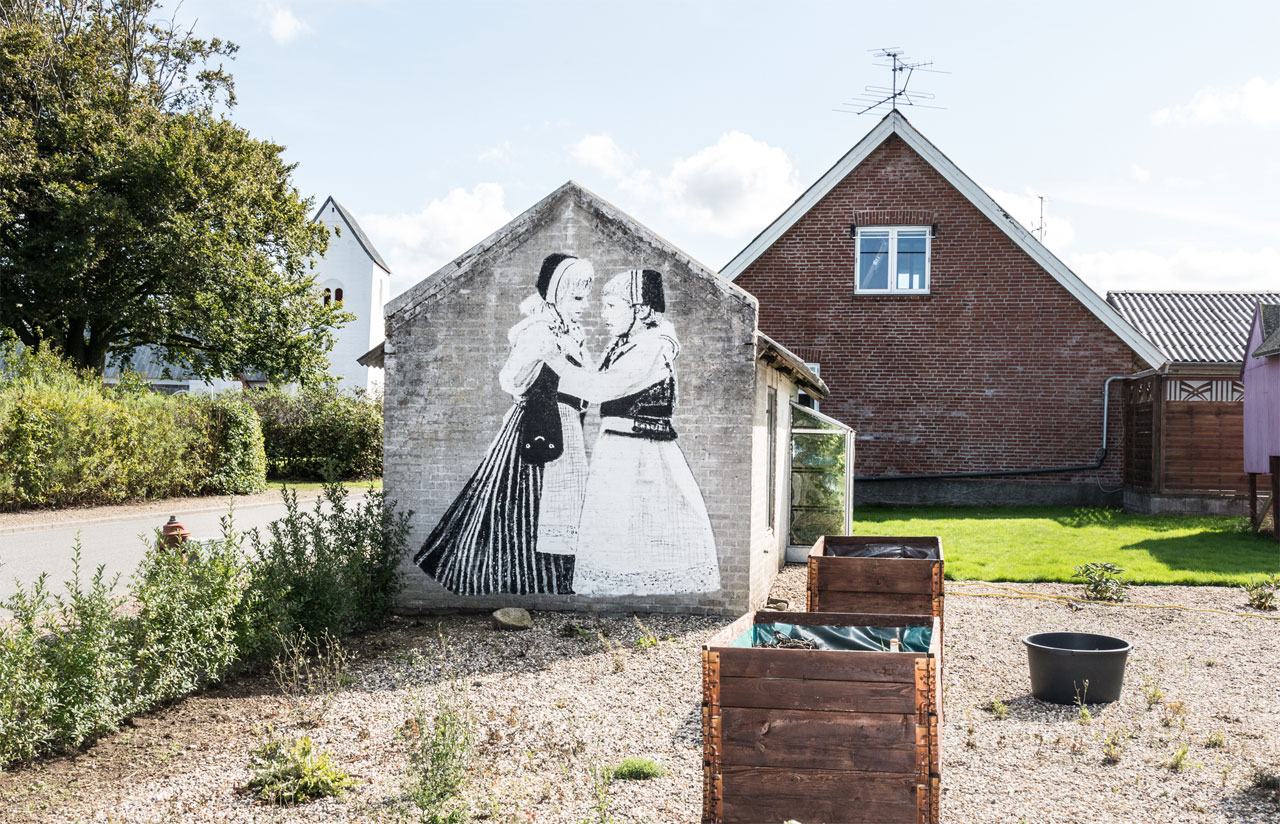
Text from the publication
Grasslands
Groundworks
by Deirdre O’Mahony, artist.
The Lure of the Local by art writer Lucy Lippard, is a critical reflection on how public art practice can work in rural places and remains relevant today as rural places are increasingly under pressure caused by changes in farming, reductions in public services and changing populations. Writing about how artists and producers might address such issues, she argues
The potential of an activist art practice that raises consciousness about land, history, culture, and place and is a catalyst for social change cannot be underestimated … They can expose the social agendas that have formed the land, bring out multiple readings of places that mean different things to different people at different times rather than merely reflecting some of their beauty back into the marketplace or the living room.i

As an artist working mainly in rural contexts, my research and art practice is grounded in collaborative engagements with different publics and contexts. I met Lene Noer and Birgitte Ejdrup Kristensen when they presented on their curatorial work at the Rural Forum in Amsterdam in 2016, and recognised the socio-political context they described of multiple communities, declining services, abandoned buildings and changing demographics from my own experience in Ireland.
Lene and Birgitte invited me to spend some research time in Åsted in 2016 to meet residents and see if I could develop a proposal for GRASSLANDS. This initial visit was very important. Given a limited timeframe I saw my role as the ‘idiosyncratic outsider’ - artist Suzanne Lacy’s term for making conscious use of the outsider position to surface narratives that are less heard, or never heard.ii In the context of Åsted, I was dependent on the curators and participants to guide the project and understand and prepare the ground and surface histories, narratives and positions that might offer ideas for the future of the village.
Hospitality was offered, and coffee and cake consumed. It was very clear that many were anxious about the future, and one moment in the village’s recent history stood out, the closure and sale of the community hall. This is a large building that sits on the outskirts of the village with meeting rooms, a fully equipped kitchen and seating and tables for over a hundred people. After years of being managed and maintained by a voluntary local committee, a decision was made to sell it some years ago. Rather than see it demolished, an entrepreneur from Selde bought it for a very low sum and it is now rented out for events and parties.


For me, this incident signified a kind of collapse of the collective wellbeing of Åsted - a withdrawal in the face of indifference towards a future that perhaps, presented too bleak a prospect to contemplate.
Visiting some of those who looked after the space for many years, it was clear that this was a painful subject. One person, had carefully preserved scrapbooks containing the history of village life in the form of newspaper cuttings, photographs and documents which had been thrown out when the building was sold.
I asked that these be scanned as in previous projects, I have used archivesiii as a catalyst to open up conversations about issues; whether social, economic or cultural, that have shaped the life of places.
I put forward a proposal to make use of the archive to activate this reflective process which was accepted by the villagers. In January 2017 an open invitation was sent to all residents to take part in installing an archive in the Village Hall over a five-day period. People were also asked to bring photographs, objects and images that they believed had significance in the history of the village; photographs, tools, old tickets and traces of community plays and performances. The archive was collated by participants and images and texts organised around key ideas and issues: community life; heritage; political interventions; the local economy; leisure and cultural activities. Some image/texts were selected for projection as large scale drawings and a workshop was held on how to make drawings from projected images. Few participants took part in the assembly of the archive however, a dinner of Irish stew brought many to see the archive and drawings reproduced about the history of the area.


The assembled stories and images spoke powerfully about village life and the changing landscape: Farming and the local economy, the utopian aspirations that drew many to live and work in the countryside, the plays put on by drama groups and re-enactments of life in Oestergaard castle the keep-fit and gymnastic classes run for the children in the village.
There were also negative aspects - the closure of rights of way, empty houses bought for demolition by the council, the former egg factory closed because of a salmonella outbreak, the renovation and subsequent closure of the village hall and efforts to maintain the village shop. The archive allowed efforts made repeatedly over the years to maintain a healthy social life in the village to become visible, a reminder of communal conviviality and political will.
One participant suggested adding paintings to gables of houses, and the archive was a ready-made source material to draw upon, a public statement about the history of the village in the context of the EU capital of culture.
This proved successful in beginning a conversation on what might happen with the collection of images. Mock-ups were made of what these might look like as murals gave an idea of both the scale and the overall appearance. Learning how to reproduce the archival images and texts took place during the next visit to the village and workshops were held to allow participants to gain skills and confidence.
The first mural was made on the outside of the old furniture factory in the centre of Åsted, painted from a 1982 newspaper photograph of Frilev Sieg in his Messerschmidt car. Frilev came to see the work being made, returning for a celebration to mark the first mural the next day. The fact that the work was made by a group of the villagers was important – the tools of production were not the exclusive domain of the artist, but rather with the participants.

At a subsequent event, a vote was taken on what images should be reproduced for further murals and in August, participants painted five further houses in time for the European Rural Forum meeting in Oestergaard Castle. Artist Leo Sagastuy Solis, supported the group as their paintings became increasingly ambitious in scale and complexity. The space that opened up in the process allowed some discussion on the social life of the area and served as a reminder of co-learning processes that used to be a part of village life; whether making reproductions of medieval costumes for plays in the castle, house visits for communal meals. More paintings are planned for the future as the Åsted residents plan to continue to change and add to the collection over time. The ownership of the project remained in the hands of the participants – a tool with which to further engage others in the future.
None of this would have been possible without the production support of Lene Noer and the curatorial input from Lene and Birgitte. As an artist from another rural place I can bring a certain amount of perspective and experience to thinking through some of the issues, however, for the process to continue to gain traction and engage with the reality of rural life in all its complexity, it has to unfold over time. This will be the legacy of the 2017 EU Capital of culture - space that allows the kind of transformative process Lucy Lippard described, to take hold, reflecting and affecting the social and cultural lives of the village’s inhabitants.
_____
• Lucy R. Lippard The Lure of the Local (The New Press: New York), 1997, 19
• American artist Suzanne Lacy uses the term to describe her role in public art projects who consciously makes use of her outsider position to articulate and extend the notions of what art is, and what can be done, in the name of art.
• Hal Foster notes that the ‘will to connect what cannot be connected’ in archival art practices ‘ is not a will to totalize so much as a will to relate—to probe a misplaced past, to collate its different signs (…) to ascertain what might remain for the present’
Hal Foster, “An Archival Impulse” OCTOBER 110, Fall 2004
